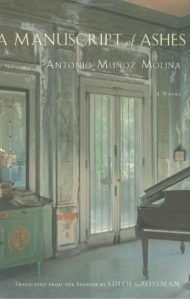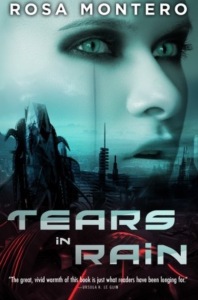But the truth is stubborn and even like this they never stopped being children. How could we forget it when the scandal was precisely this. Children. And then one day they were thieves. “They seemed so nice!” said some, but this expression hid a personal slight: “they seemed so nice, but they tricked us, the little hypocrites.” Children, yes, but not like ours.***
but this expression hid a personal slight: “they seemed so nice, but they tricked us, the little hypocrites.” Children, yes, but not like ours.***
This book, my fifth read for the Prix du Roman de Rochefort 2021, concerns an unnamed central south american country and a set of events in 1993 leading up to a drama whichthe narrator lokks back on twenty years later, the death of a large number of children in circumstances not revealed until the end of the book. Slowly but surely a large number of children drift into the town of San Cristobal without anyone knowing where they come from nor understanding the strange language they speak. Initially they just sit around talking and playing with each other but with no real interaction with the towns people who at first are mildly curious about them. The story is told through the eyes of the narrator, a social worker who himself has recently moved to this city at the edge of the jungle with his wife, who is happy to move back to her native town and his adolescent step-daughter. As the children begin to steel to survive, the town’s people begin to turn against them and in order to do so must show to themselves that they are not like their own children. illustrated in the opening quote:
The town slowly becomes hostile towards the children, raising questions of who decides which children should be provided for and which not, what are the rules? Would these rules be obvious to children without parents who didn’t speak the town’s language? The people don’t know where the children go at night and assume that they camp out in the jungle. When better than Christmas to see the differences between the haves and the have nots? One day, drama strikes at the Dakota supermarket and things can never go back to how they were:
It probably wasn’t by chance if the attack on the Dakota supermarket took place after the holidays. Never quite like at Christmas or the New Year do we perceive with such clarity that the unhappy do not live in the same world as the happy.
***
During those ten minutes, people entered and left as if nothing was happening; one woman took advantage of the confusion to steel what seemed to be hair dye whilst at the other side of the counter a ten year old had just stuck a knife into an adults stomach.***
The town’s people then hunt for the children in the jungle but after several days hunting cannot find them, eventually they coerce a child they find, by a form of torture, sleep deprivation, to betray the others. Then truedrama strikes and the betrayer is the only child that doesn’t die and he must live with this guilt for the rest of his life.
Another book that never really gained my interest, maybe too much of a parable, not in my shortlist.
First Published in spanish as “República luminosa” in 2017, by Casanovas and Lynch
Translated into french by François Gaudry and published as “Une république lumineuse” by Christian Bourgeois in 2020
*** my translation
The quotes as read in French before translation
Mais la réalité est tétue et même ainsi ils ne cessaient d’être des enfants. Comment pouvions-nous l’oublier alors que précisément le scandale était là. Des enfants. Et un beau jour, c’étaient des voleurs. “Ils avaient l’air si gentils!” s’exclamaient certains, mais cette réaction cachait une offense personnelle: “Ils avaient l’air si gentils, mais ils nous ont trompés, ces petits hypocrites.” Des enfants, oui, mais pas comme nos enfants.
Ce ne fut peut-être pas par hasard si l’attaque du supermarché Dakota eut lieu après les fêtes. Jamais comme à Noël ou au Nouvel An on ne perçois avec autant d’acuité que le monde des tristes n’est pas le même que celui des heureux.
Pendant ces dix minutes, des personnes entrent, sortent, reviennent comme s’il ne ne se passait rien; une femme profite de la confusion pour voler ce qui ressemble à de la teinture pour cheveux, tandis que de l’autre côté du rayon un enfant de dix ans vient de planter un couteau dans le ventre d’un adulte.
 The wood of the train cars was stained a beautiful blue, the same colour that can be seen even today on certain bricks at Auschwitz; both hearken to cyanide’s authentic origins as a by-product isolated in 1782 from the first modern synthetic pigment, Prussian Blue.
The wood of the train cars was stained a beautiful blue, the same colour that can be seen even today on certain bricks at Auschwitz; both hearken to cyanide’s authentic origins as a by-product isolated in 1782 from the first modern synthetic pigment, Prussian Blue. he considered the gauchos every bit a part of the estancia as any one of the cows and he wouldn’t let a single one die without good reason.
he considered the gauchos every bit a part of the estancia as any one of the cows and he wouldn’t let a single one die without good reason. Then along came the mother-fucking military and everything went haywire. Though, the truth is it was Allende’s fault. As one of my friends says: if you’re only half a revolutionary you might as well dig your own grave.”***
Then along came the mother-fucking military and everything went haywire. Though, the truth is it was Allende’s fault. As one of my friends says: if you’re only half a revolutionary you might as well dig your own grave.”*** But they said the other one had committed suicide, that he took advantage of a moment’s carelessness on the part of the guards who were interrogating him to throw himself down into the courtyard and die in handcuffs.
But they said the other one had committed suicide, that he took advantage of a moment’s carelessness on the part of the guards who were interrogating him to throw himself down into the courtyard and die in handcuffs. a product of his incomplete virility, eventually becomes more appreciable. That which the sailors, in other situations good family men, consider repugnant, seems to them, in the course of the sea crossing, as being more and more natural.***
a product of his incomplete virility, eventually becomes more appreciable. That which the sailors, in other situations good family men, consider repugnant, seems to them, in the course of the sea crossing, as being more and more natural.*** but the country was still governed by Franco’s laws and still smelled exactly the same as it did under Franco: like shit. I was sixteen years old back then, and so was Zarco. We lived very near each other, and very far away from each other.
but the country was still governed by Franco’s laws and still smelled exactly the same as it did under Franco: like shit. I was sixteen years old back then, and so was Zarco. We lived very near each other, and very far away from each other.
 Where was she going, to market?What was she carrying in her bag? Had she seen Jesus preach?..Then something happened that took Elisa’s breath away. After a new cut the outline appeared in profile the head raised as if she was looking at the camera as if she had seen them all…Her eyes were missing as well as a large part of her face and even like that she seemed to be walking as if she could see perfectly.***
Where was she going, to market?What was she carrying in her bag? Had she seen Jesus preach?..Then something happened that took Elisa’s breath away. After a new cut the outline appeared in profile the head raised as if she was looking at the camera as if she had seen them all…Her eyes were missing as well as a large part of her face and even like that she seemed to be walking as if she could see perfectly.*** together a coherent explanation.***
together a coherent explanation.***